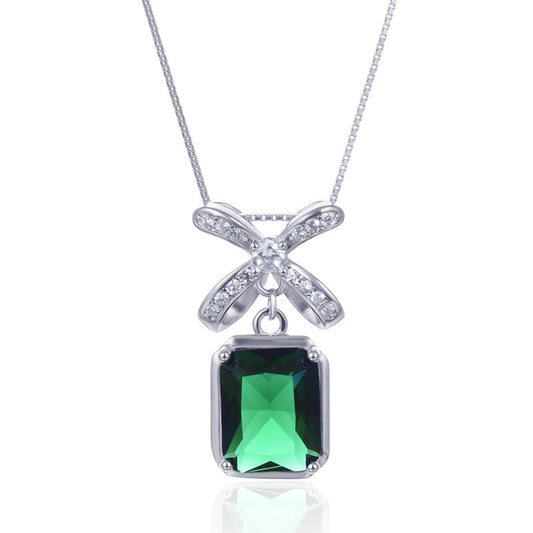Mastering the Classics: Building a Snake Game with JavaScript
When it comes to retro gaming, few titles are as iconic and nostalgic as the classic Snake game. This simple yet addictive game has captured the hearts of gamers across generations. Today, we're going to revisit this classic and build our own version of the Snake game using JavaScript.
Introduction to the Snake Game
The Snake game, also known as Nibbles, is a classic arcade game that was popularized by Nokia phones in the late 90s and early 2000s. In this game, players control a snake that grows longer as it eats apples or pellets scattered across the screen. The goal is to keep the snake alive by avoiding collisions with the walls or itself.
Getting Started with JavaScript
Before we dive into the code, let's set up our development environment. You'll need a text editor or IDE (Integrated Development Environment) to write your code. Popular choices include Visual Studio Code, Sublime Text, or Atom.
Once you have your editor set up, create a new HTML file called "index.html" and a JavaScript file called "snake.js". Link the JavaScript file to your HTML document using the <script> tag.
| <html> | |
| <head> | |
| <title>Snake Game</title> | |
| <style> | |
| /* Add your CSS styles here */ | |
| </style> | |
| </head> | |
| <body> | |
| <canvas id="gameCanvas" width="400" height="400"></canvas> | |
| <script src="snake.js"></script> | |
| </body> | |
| </html> |
Now we're ready to start coding our Snake game in JavaScript.
Setting Up the Game Board
The first step is to set up the game board. We'll use the HTML5 <canvas> element to render our game. In your JavaScript file, start by selecting the canvas element and getting its 2D rendering context.
| const canvas = document.getElementById('gameCanvas'); | |
| const ctx = canvas.getContext('2d'); |
Next, let's define some global variables for our game. We'll need variables for the snake's position, direction, and speed, as well as variables for the size of the game board and the size of each cell.
| let snake = [{ x: 10, y: 10 }]; // Initial snake position | |
| let dx = 1; // Horizontal movement | |
| let dy = 0; // Vertical movement | |
| let food = { x: null, y: null }; // Food position | |
| let changingDirection = false; // Flag to prevent immediate direction changes | |
| const cellSize = 20; // Size of each cell in pixels | |
| const canvasWidth = canvas.width; | |
| const canvasHeight = canvas.height; | |
| const gridWidth = canvasWidth / cellSize; | |
| const gridHeight = canvasHeight / cellSize; |
Drawing the Game Board and Snake
Now that we have our variables set up, let's create a function to draw the game board and the snake. We'll use the fillStyle and fillRect methods of the canvas context to draw each cell.
| function drawGame() { | |
| // Clear the canvas | |
| ctx.clearRect(0, 0, canvasWidth, canvasHeight); | |
| // Draw the snake | |
| ctx.fillStyle = 'green'; | |
| for (let cell of snake) { | |
| ctx.fillRect(cell.x * cellSize, cell.y * cellSize, cellSize, cellSize); | |
| } | |
| // Draw the food | |
| ctx.fillStyle = 'red'; | |
| ctx.fillRect(food.x * cellSize, food.y * cellSize, cellSize, cellSize); | |
| } |
Moving the Snake
To move the snake, we'll create a function called moveSnake that updates the snake's position based on its current direction. We'll also need to check if the snake has eaten the food and grow it accordingly.
| function moveSnake() { | |
| // Create a new head for the snake based on its current direction | |
| const head = { x: snake[0].x + dx, y: snake[0].y + dy }; | |
| snake.unshift(head); // Add the new head to the front of the snake array | |
| // Check if the snake has eaten the food | |
| if (snake[0].x === food.x && snake[0].y === food.y) { | |
| // Generate new food position (omitted for brevity) | |
| // ... | |
| } else { | |
| snake.pop(); // Remove the tail from the snake array | |
| } | |
| } |
Controlling the Snake
To control the snake, we'll listen for keyboard events and update the snake's direction accordingly. We'll use the addEventListener method to listen for keydown events and update the dx and dy variables based on the pressed key.
| document.addEventListener('keydown', function (event) { | |
| switch (event.key) { | |
| case 'ArrowUp': | |
| if (dy === 0) { dy = -1; dx = 0; changingDirection = true; } | |
| break; | |
| case 'ArrowDown': | |
| if (dy === 0) { dy = 1; dx = 0; changingDirection = true; } | |
| break; | |
| case 'ArrowLeft': | |
| if (dx === 0) { dx = -1; dy = 0; changingDirection = true; } | |
| break; | |
| case 'ArrowRight': | |
| if (dx === 0) { dx = 1; dy = 0; changingDirection = true; } | |
| break; | |
| } | |
| }); |
Note that we added a changingDirection flag to prevent the snake from changing direction immediately after eating the food, which can cause it to crash into itself.
Game Loop and Collision Detection
Finally, we need to create a game loop that updates the game state and checks for collisions. We'll use setInterval to create a repeating timer that calls our update and draw functions.
Inside the game loop, we'll check if the snake has collided with the walls or itself. If a collision occurs, we'll stop the game loop and display a game over message.
| function gameLoop() { | |
| if (changingDirection) { | |
| changingDirection = false; | |
| } else { | |
| moveSnake(); | |
| } | |
| // Check for collisions (omitted for brevity) | |
| // ... | |
| drawGame(); | |
| } | |
| let gameInterval = setInterval(gameLoop, 100); // Update the game every 100ms |
Wrapping Up
That's it! You now have a basic Snake game implemented in JavaScript. Of course, there's still plenty of room for improvement and customization. You can add scoring, levels, different types of food, and more to enhance the gameplay experience.
Conclusion
Building a Snake game with JavaScript is a fun and educational exercise that teaches you about game development, programming logic, and interactive media. Whether you're a beginner or an experienced developer, revisiting classic games like Snake can provide valuable insights into game mechanics and player engagement.
So, grab your favorite text editor, fire up your browser, and start coding! Who knows, maybe your version of Snake will become the next retro gaming hit.
Resources and Further Learning
- MDN Web Docs: An excellent resource for learning JavaScript and web development.
-
HTML5 Canvas Tutorial: Learn more about the HTML5
<canvas>element and how to draw graphics with JavaScript. - Game Development Tutorials: A collection of tutorials and resources for game development with JavaScript and other web technologies.
Remember, practice makes perfect! Keep coding, experimenting, and learning to become a master of JavaScript game development.








